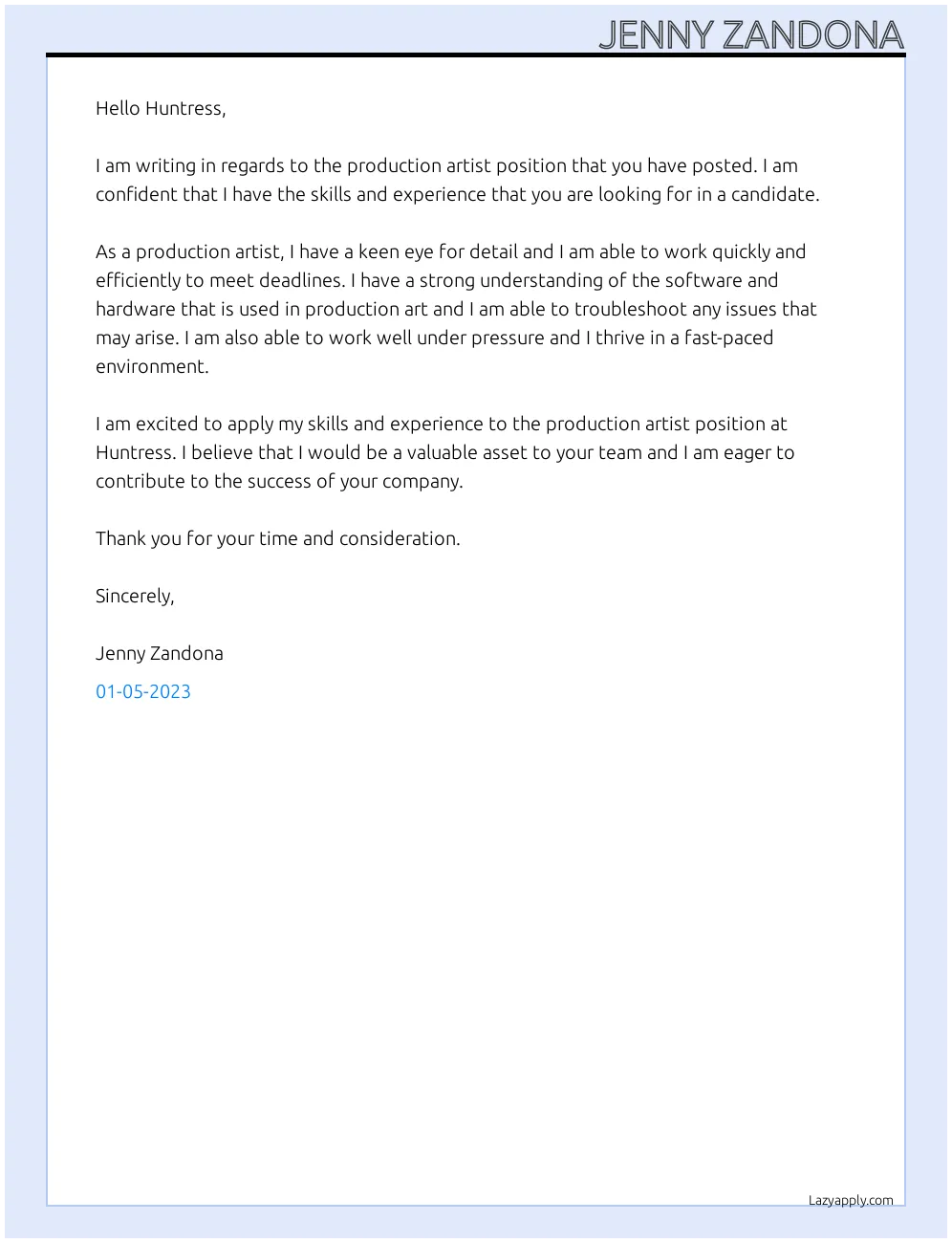Why Your Production Artist Cover Letter Matters
In the competitive world of design, your production artist cover letter is your first chance to make a great impression. It’s more than just a formality; it’s your introduction, a carefully crafted narrative that demonstrates why you’re the ideal candidate. A well-written cover letter showcases your passion, experience, and unique skills, setting you apart from other applicants. Think of it as a mini-portfolio, a preview of your abilities to create visually stunning and effective designs. It’s where you can highlight your understanding of the role, and express your interest in the specific company and position. Without a compelling cover letter, your resume might get overlooked, meaning you could miss out on valuable opportunities. It’s your opportunity to show personality, enthusiasm, and attention to detail – all crucial for a successful career as a production artist.
Understanding the Role of a Production Artist
Before you begin writing, it’s critical to understand the scope of a production artist’s role. Production artists are the unsung heroes of the design world, responsible for taking creative concepts and transforming them into final, print-ready or digital-ready products. This role blends creativity with technical proficiency, requiring a keen eye for detail and a deep understanding of design principles. They ensure that designs are technically sound, meet specifications, and are optimized for their intended use. A production artist works closely with designers, project managers, and other stakeholders to maintain brand consistency and ensure the final product is error-free and meets the client’s expectations. They are skilled in various design software, such as Adobe Creative Suite, and often have a strong knowledge of pre-press processes, printing techniques, and digital asset management.
Key Responsibilities of a Production Artist
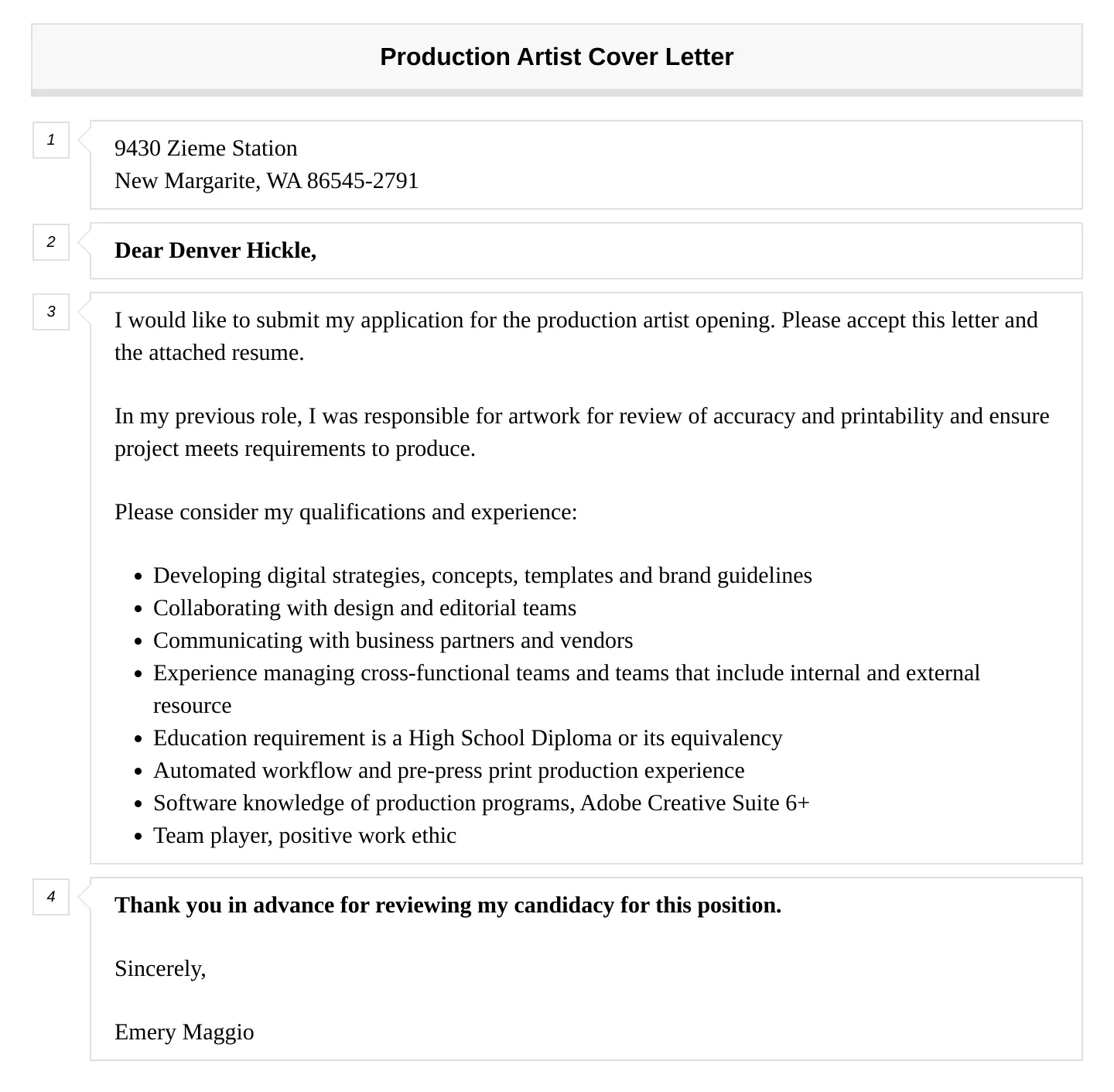
The responsibilities of a production artist are multifaceted and vary depending on the industry and company. Common tasks include preparing files for print or digital distribution, making revisions based on feedback, ensuring color accuracy, and maintaining design consistency across different platforms. They also may be responsible for retouching images, creating mockups, and managing design assets. Production artists must be able to work independently and as part of a team, often under tight deadlines. Excellent organizational skills, attention to detail, and the ability to troubleshoot technical issues are essential. Moreover, they must be adept at communicating with team members and clients to clarify requirements and manage expectations. They should also stay updated on the latest design trends and software updates to maintain a high level of efficiency and quality.
Top 7 Cover Letter Tips for Production Artists
Now, let’s dive into the core of crafting an effective cover letter. These seven tips will guide you in creating a compelling introduction that captivates the hiring manager and showcases your skills and passion.
Highlight Your Relevant Skills
Your cover letter is the ideal space to highlight your most relevant skills. Carefully review the job description and identify the key requirements. Then, provide specific examples from your past projects or experiences to demonstrate how you meet those requirements. This could include your proficiency in Adobe Creative Suite (Photoshop, Illustrator, InDesign), your experience with pre-press processes, or your knowledge of digital asset management. Quantify your skills whenever possible; for example, ‘Managed a team of five designers and increased project efficiency by 15%’. Make sure to tailor your skill descriptions to align with the specifics of the job you are applying for, emphasizing those skills that are most valued by the prospective employer. Avoid using generic statements; be specific and showcase tangible results that prove your capabilities.
Showcase Your Portfolio
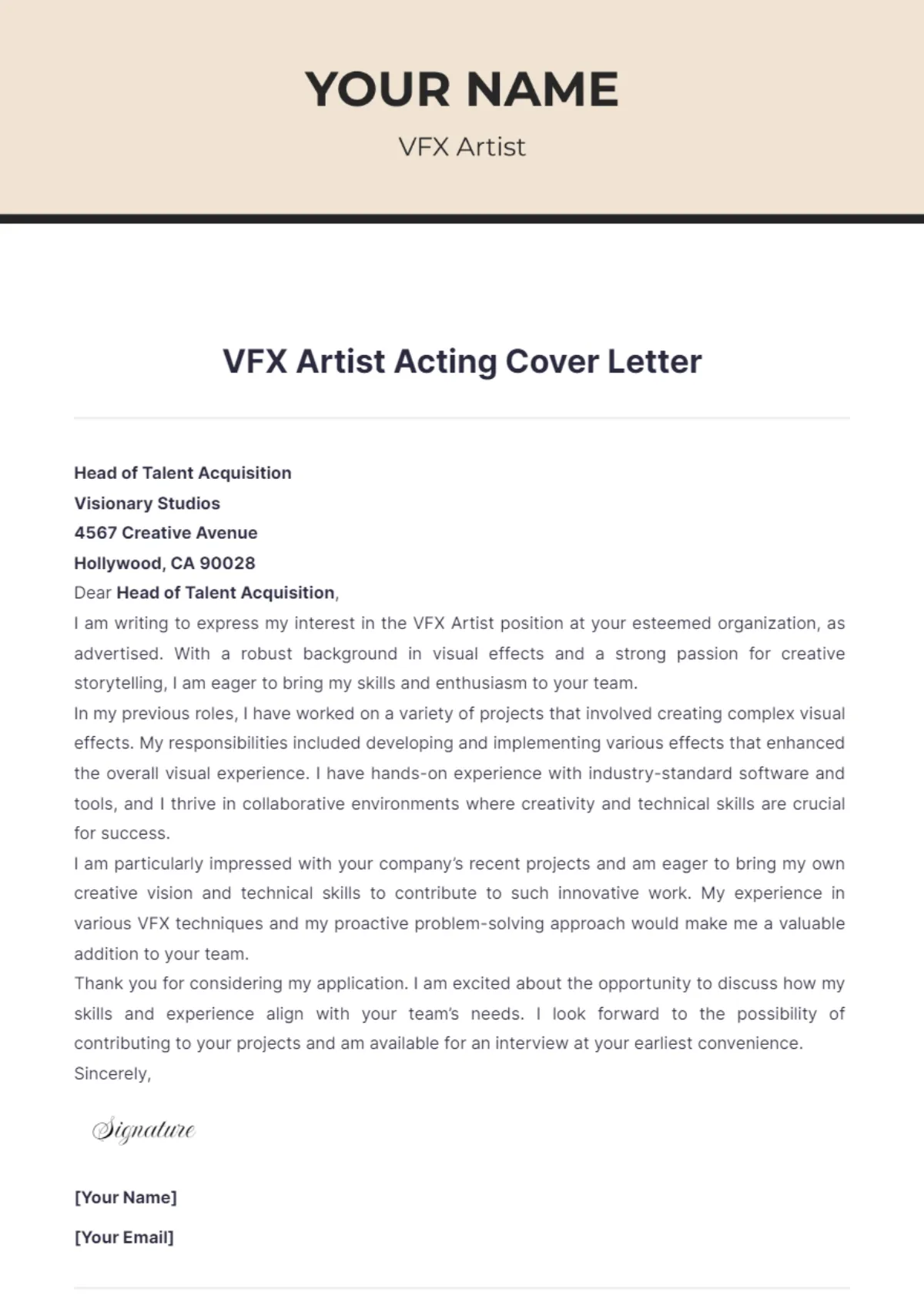
Your portfolio is essential for a production artist. It’s your visual resume. In your cover letter, prominently mention your portfolio and how to access it. Provide a direct link to your online portfolio, or if you have a physical portfolio, explain how it can be viewed (e.g., available upon request). Don’t simply state that you have a portfolio; briefly describe some of your best work. Highlight specific projects that align with the job’s requirements, and mention the techniques or software used. This gives the hiring manager a quick glimpse of your work and encourages them to explore your portfolio in more detail. Mentioning specific pieces and their impact is critical, adding a personal touch to showcase what you offer.
Tailor Your Letter to the Job
Generic cover letters are easily spotted and often discarded. Every cover letter should be tailored to the specific job and company. Research the company and the role thoroughly. Understand their brand, their values, and their recent projects. Customize your letter to reflect your understanding of their needs and how you can contribute to their success. Mention specific projects you admire, or explain why you’re drawn to the company’s mission or culture. Demonstrating that you’ve done your homework shows the hiring manager that you’re genuinely interested in the position and not just sending out a generic application. This personalized approach dramatically increases your chances of getting noticed.
Quantify Your Achievements
Numbers speak volumes. Instead of simply stating what you did, quantify your achievements whenever possible. Use metrics to demonstrate your impact and value to previous employers or clients. For example, instead of saying ‘Improved efficiency’, say ‘Increased project efficiency by 20% by implementing new workflow processes’. Other examples: ‘Reduced production errors by 15%’, ‘Managed a project budget of $X’, or ‘Completed Y number of projects ahead of schedule’. Quantifiable achievements offer concrete evidence of your skills and abilities. They make your cover letter more compelling and memorable, helping you stand out from other applicants. This data makes your accomplishments much more persuasive than vague claims.
Use Action Verbs
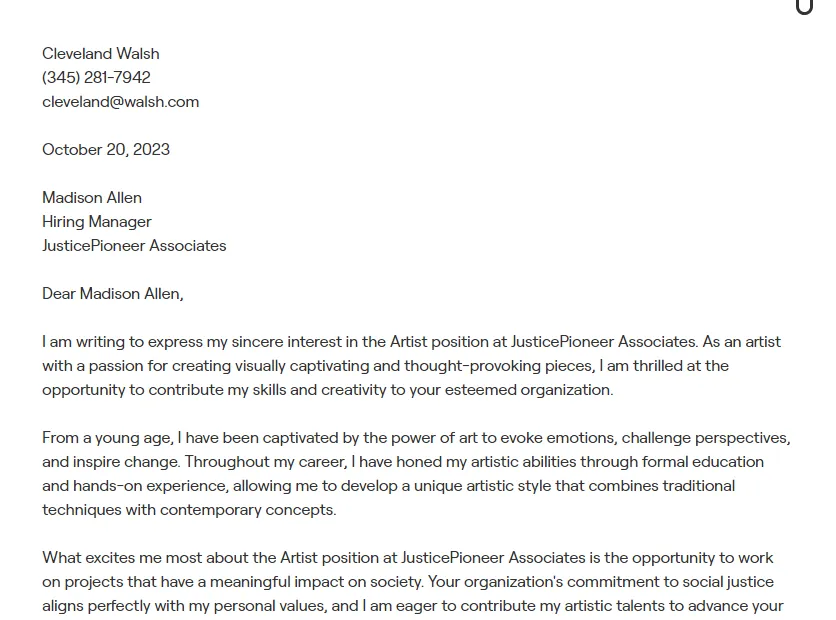
Action verbs create a dynamic and engaging cover letter. They show what you’ve done, providing a vivid picture of your skills and experience. Start each bullet point or sentence with a strong action verb. Examples include: designed, created, managed, developed, implemented, streamlined, collaborated, and optimized. These verbs help to convey your accomplishments with clarity and power. The goal is to demonstrate your involvement in each project, showcasing your ability to take initiative and achieve results. Action verbs make your letter more active and engaging for the reader, making your application more compelling. Replace passive language with these verbs for maximum impact.
Proofread Meticulously
Typos and grammatical errors can instantly undermine your credibility. They show a lack of attention to detail, a crucial trait for a production artist. Before you submit your cover letter, proofread it carefully multiple times. Use spell check and grammar check tools, but don’t rely on them completely. Have someone else review your letter for any mistakes. The extra time spent proofreading ensures that your letter is polished and professional. A clean, error-free cover letter demonstrates your professionalism and your respect for the hiring manager’s time. It shows that you’re detail-oriented and take pride in your work. Proofreading is an essential step that can make the difference between getting an interview and being overlooked.
Express Your Enthusiasm
Show genuine enthusiasm for the position and the company. Your cover letter is where you can express your passion for design. Explain why you are excited about the opportunity and what you hope to achieve in the role. Mention specific aspects of the company’s work that appeal to you, such as their values, their projects, or their team. Let the hiring manager know why you want to work there and how your skills and experience align with their goals. Injecting enthusiasm into your letter makes your application more memorable and shows that you’re genuinely interested in the role. Expressing enthusiasm makes the hiring manager feel like you would be a good fit for their company culture.
Formatting and Design Best Practices

In addition to content, the formatting and design of your cover letter are important, especially for a production artist. Your letter should be visually appealing and easy to read. Following these best practices shows your attention to detail and design sense.
Choosing the Right Font and Layout
Select a professional and readable font, such as Arial, Helvetica, or Calibri. Ensure your font size is easy on the eyes (11-12 points). Use clear headings and subheadings to organize your content and make it easy to scan. Maintain consistent spacing and margins. Use bullet points to break up large blocks of text and highlight key information. A well-designed layout demonstrates your understanding of visual communication principles and shows that you value clarity and readability. Make sure the layout reflects your personal brand and design aesthetic, but err on the side of clean and professional.
Ensuring Readability
Readability is key. Keep your paragraphs concise and focused. Avoid long, dense blocks of text. Use white space strategically to give the reader’s eyes a break. Ensure a good contrast between the text and the background. Use headings, subheadings, and bullet points to break up the text and make it easy to scan. Proofread the letter carefully for any errors that could detract from readability. A well-formatted, easy-to-read cover letter will capture the hiring manager’s attention. A reader-friendly design shows consideration and respect for the reader’s time. Consider how the letter will look when printed, and make sure it translates well across various devices.
Common Mistakes to Avoid
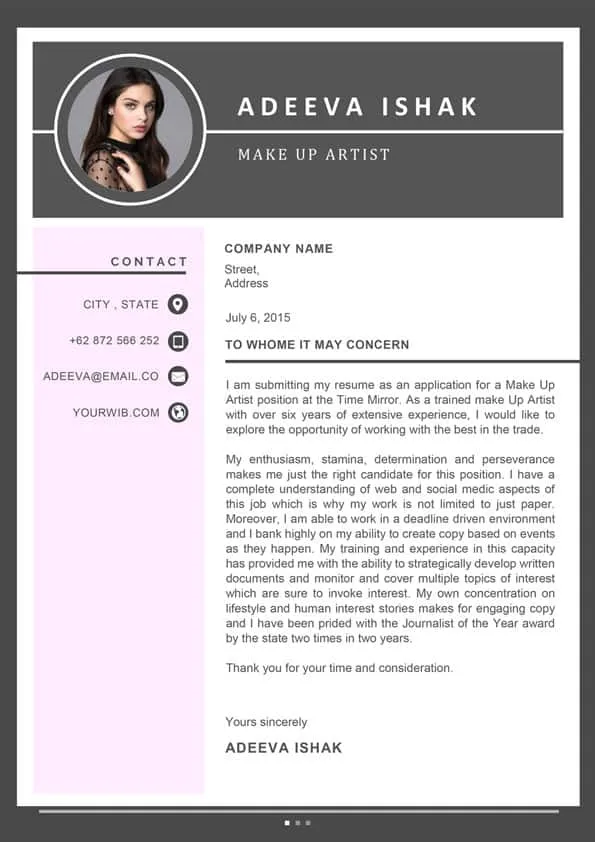
There are several common mistakes that can significantly damage your chances. Avoiding these missteps is as important as following the positive advice above.
Generic Templates
Avoid using generic cover letter templates without significant customization. Hiring managers can easily spot these letters, which signal a lack of genuine interest in the position. While templates can provide a basic structure, they often lack the personalization needed to capture the hiring manager’s attention. Always tailor your cover letter to the specific job and company. Research the company, its projects, and its values. Personalize the letter to demonstrate your understanding of the role and your fit with the company culture. Replace generic phrases with specific examples from your experience. A personalized letter shows you are serious about the job and you have taken the time to craft a great first impression.
Typos and Grammatical Errors
As previously mentioned, typos and grammatical errors can instantly undermine your credibility. They demonstrate a lack of attention to detail, which is crucial for a production artist. Always proofread your cover letter meticulously, and have someone else review it for any mistakes. Use spell check and grammar check tools, but don’t rely on them entirely. Typos and grammatical errors are a sign of carelessness, sending the wrong message to a hiring manager. Proofreading your cover letter carefully is the best way to prevent these mistakes, ensuring your application is polished and professional.
Failing to Mention Specific Projects
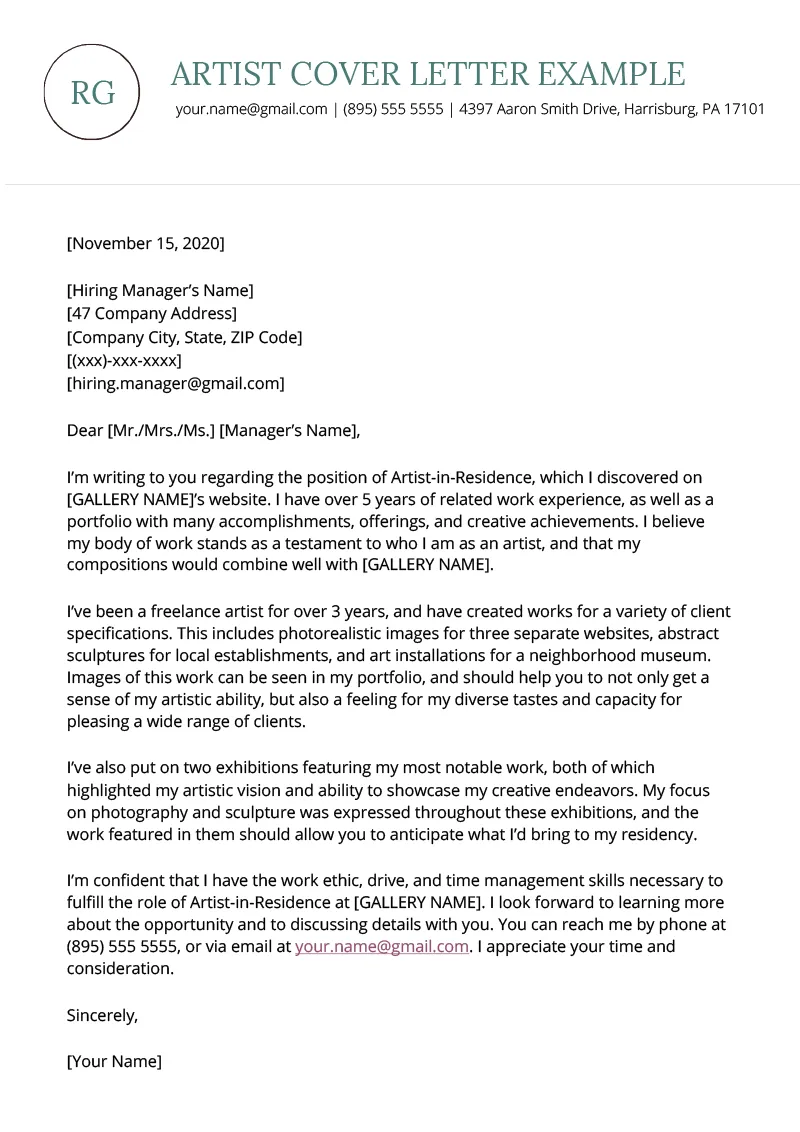
Don’t just list your responsibilities; provide details of your accomplishments. When describing your past projects, highlight specific results. This is your opportunity to showcase your skills and experience. Instead of stating ‘Managed social media campaigns’, share the impact; for example, ‘Managed social media campaigns, increasing engagement by 30% and driving a 15% increase in website traffic’. Provide context and quantify your accomplishments. Focus on what you achieved, and what you learned from the project. Give the hiring manager a clear understanding of your skills and how you can contribute to their team.
Crafting a Strong Closing
Your closing should reinforce your interest and call to action. Restate your enthusiasm for the opportunity and thank the hiring manager for their time and consideration. Provide a clear call to action; for example, ‘I am eager to discuss how my skills can benefit your team. I am available for an interview at your earliest convenience’. Include your contact information, including your phone number and email address. Sign off professionally, using phrases like ‘Sincerely’ or ‘Best regards’. A strong closing reinforces your desire for the position and makes it easier for the hiring manager to take the next step. A clear call to action makes it simple to proceed, increasing the likelihood of a response. Make your closing memorable and leave a lasting positive impression.
